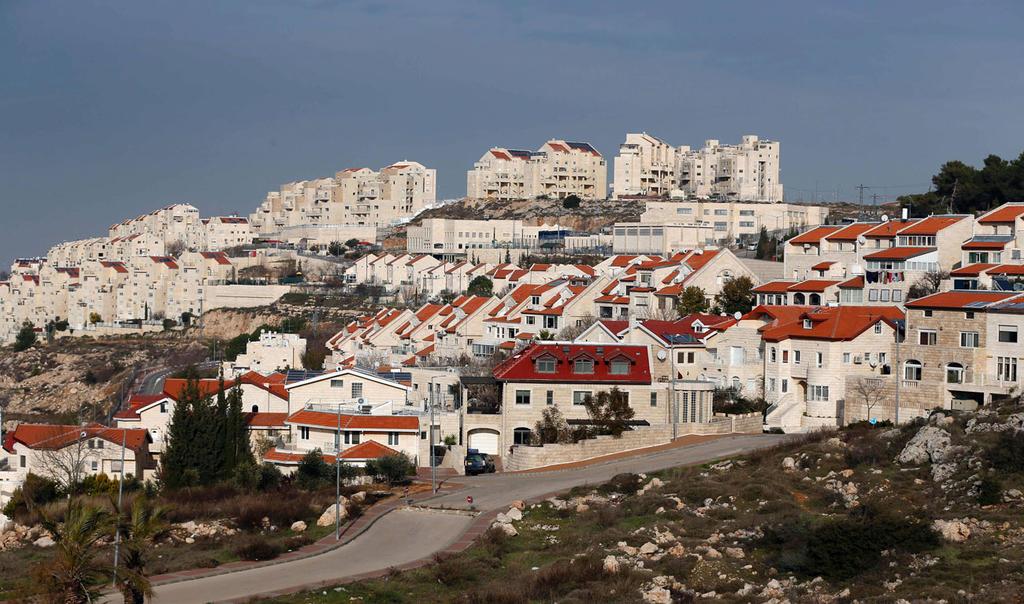Israel 2020 would be unrecognizable to an Israeli in 1948. When the Jewish state first declared independence, it was not a forgone conclusion that it would survive, let alone thrive.
In those early days, the coalition of Arab countries was convinced it would drive Israel into the sea.
5 View gallery
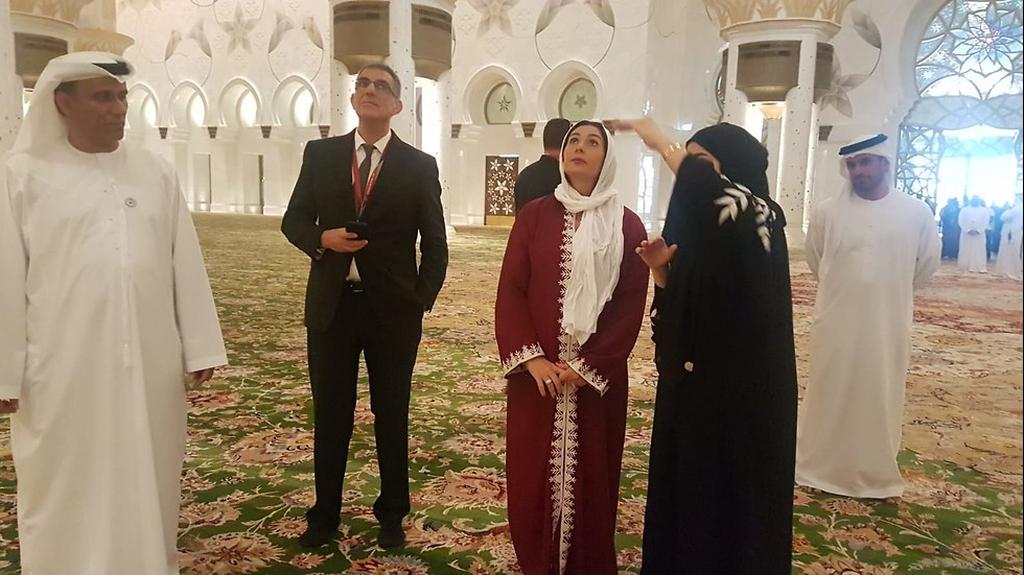

Minister Miri Regev visits the Sheikh Zayed Mosque in the UAE in 2018
(Photo: Chen Kedem Maktubi)
Now, of the Arab states that have not made formal peace with Israel, many are surging ahead with diplomatic relationships unimaginable a decade ago.
Throughout all that time, the accepted formula for peace was via the creation of a Palestinian state.
And despite the Palestinians’ rejection of a state when presented at the UN in 1947, their refusal to create a state when Jordan controlled the West Bank until 1967, and their refusal to negotiate in good faith in the intervening years, the model was never altered.
The approach to peace has remained static while the region has not.
Enter U.S. President Donald Trump’s “Vision for Peace” (VFP), which began its due diligence by choosing to look at the reality of life in the disputed territories of today.
That meant recognizing that the half-million Israelis who live in Judea and Samaria do so legally (according to the Pompeo Doctrine, the U.S. “no longer recognizes Israeli settlements as per se inconsistent with international law”) and are not obstacles to peace.
And this is why the VFP represents a pathway toward U.S. recognition of Israeli sovereignty over Israeli settlements in Judea and Samaria.
The next truth, which had been ignored in previous decades, is that Israel had been pressured into negotiating with an adversary who has continued to create an environment that is inhospitable for peace.
It’s not that there was a lack of awareness of the corruption, incitement, human rights violations, “pay to slay” financial incentives for terrorism, and more, but when the final goal was to create a Palestinian state (and not genuine peace), all those sins were overlooked.
Now that the VFP has recalibrated the process to actually realize peace, it has become obvious that the above list is poisonous to the goal.
Therefore, VFP requires that, to commence negotiations, the Palestinians must renounce all of the above and more, to create a genuine environment where peace can flourish even after a White House signing ceremony.
5 View gallery
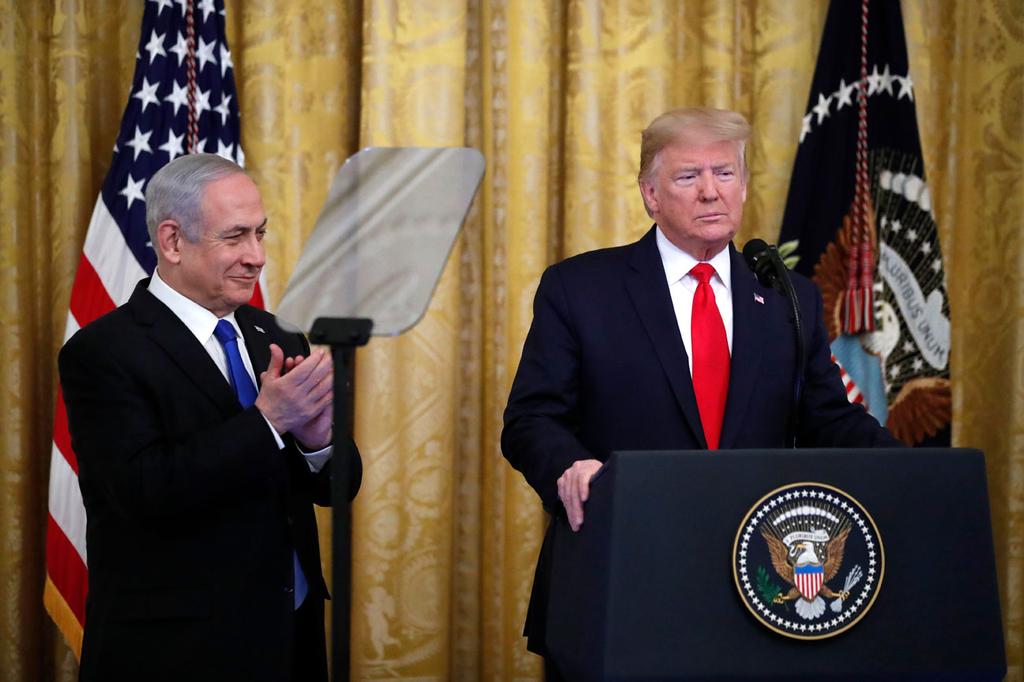

Prime Minister Benjamin Netanyahu applauds as U.S. President Donald Trump unveils his 'deal of the century' at the White House in January
(Photo: AP)
Regardless of how unlikely it is that the Palestinians will comply, it is hard to deny the truth: The only imaginable scenario in which genuine peace can be achieved is when there is a motivated partner who rejects terrorism and incitement and respects human rights.
Critics of the VFP have raised the following concerns:
- The VFP supposedly allows Israel to unilaterally change facts on the ground, ensuring that a Palestinian state is noncontiguous and nonviable. In reality, the plan doesn’t make facts on the ground; it only reflects them. Again, the goal here is to achieve peace, which is not necessarily equivalent to creating a Palestinian state.
5 View gallery
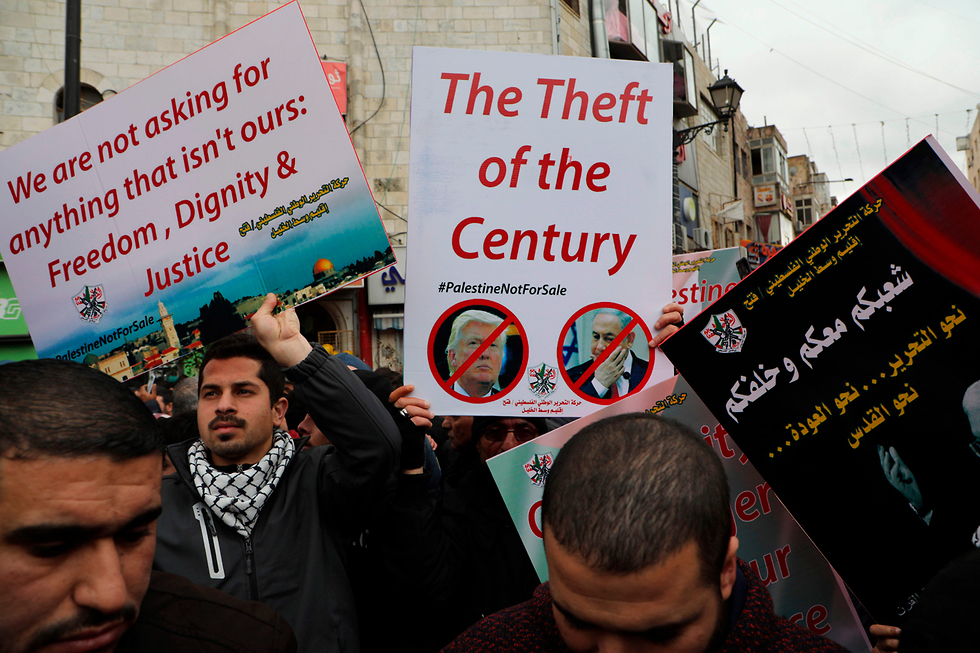

Palestinians in Ramallah protest against the U.S. peace plan, February 2020
(Photo: AFP)
- Once Israel applies Israeli law on the Israeli municipalities in Judea and Samaria, the remaining territory (around 70% of the total) would become a Palestinian state even if its leaders did not reform and become conciliatory. More than a dozen Israeli towns could be left as vulnerable, indefensible enclaves surrounded by a hostile Palestinian state. However, according to the plan, a Palestinian state could only be created through negotiations with Israel, would be demilitarized, and would not control its own borders. This is essentially how the Palestinian Authority operates today. The Palestinians would be no more threatening, and Israel’s military presence, if necessary, would be just as robust. Decades of Israel negotiating from weakness have made it impossible for these critics to believe. Knowing your history is not the same thing as repeating history. The difference is learning from history. This plan does exactly that.
- The Trump plan is supposedly “one-sided.” No, it reflects reality. Can one honestly suggest that if this plan is followed, it won’t lead to peace? Of course it will. This is where the strongest divergence is from previous attempts. They were all designed to create a Palestinian state. But in all cases, it is hard to imagine how that state would actually lead to a resolution of the conflict and not mortal danger for Israel.
- Israel’s advances with the Gulf states could be reversed. The warming of ties between Israel and the Gulf states has been many years in the making and is based on geopolitical issues independent of the Israeli-Palestinian conflict. In fact, if not for the conflict with the Palestinians, deeper relations would have probably been established already. The conflict could indeed pose a significant long-term threat to the improvement of these relations. By clarifying Israel’s intentions in the disputed territory, we address this right away. Since Israel has no intention of removing hundreds of thousands of Israelis from their homes, it is best to remove doubt as soon as possible. There will be some pushback but the warming of ties is of significant mutual interest and the Arab states will not give the Palestinians veto power over their diplomatic relations anymore.
Israel is ready for this step. After three elections, Israelis elected a unity government committed to implementing the VFP. This is even written into the government’s coalition agreement.
5 View gallery
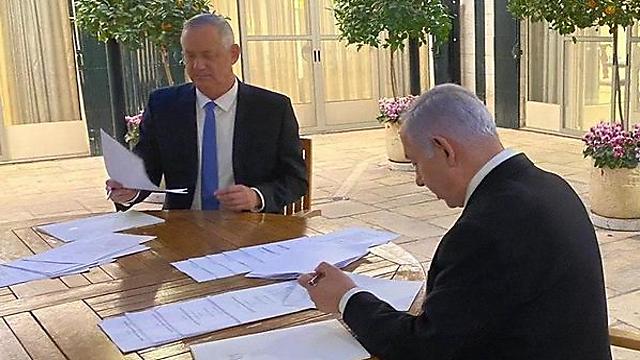

Blue & White chief Benny Gantz and Prime Minister Benjamin Netanyahu signing the coalition deal in April
The demonstration of broad Israeli support for the plan, combined with a U.S. government committed to flexing its diplomatic heft, presents Israel with the ideal circumstances to progress forward in this path and move toward resolving the conflict once and for all.
Regardless of whether this particular Vision for Peace is successful in resolving the conflict, when the conflict is eventually resolved, you can bet it will be based on this framework.
We need a plan based on reality, not a mirage that looks attractive but, in the end, remains elusive. This plan is based on reality and can work if given the chance.
Oded Revivi is the mayor of Efrat and has served as the chief foreign envoy for the Israeli mayors of Judea and Samaria


